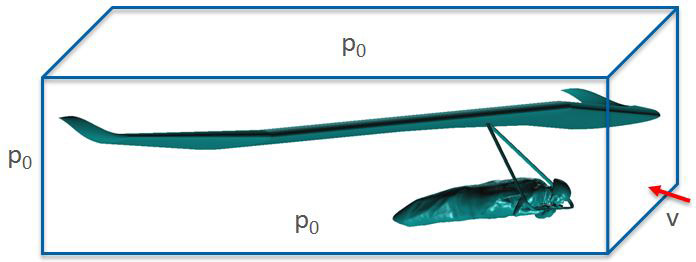Hang glider

In this study, an attempt was made to improve the gliding behavior of a hang glider in order to improve the ratio between drag and lift, especially for the pilot. In particular, the hand position (upper grip or lower grip) and the position of the pilot in relation to the inflow were of interest. For this purpose, the pilot was measured hanging from the hang glider in the harness in a gymnasium by means of a 3D scan. Thus, on the one hand, the position of the pilot relative to the hang glider and on the other hand, the arm position on the pilot could be determined in one.

The surface data obtained from this were supplemented with design data of the trapezoid. Subsequently, the different configurations were compared with each other by means of flow simulation. From this relative comparison, the flow-favorable arm posture of the pilot could be determined. Since measurements of muscle activity were also taken at the same time, it was also possible to assess whether this arm posture is ergonomic for long-distance flights.

The project was carried out together with the Institute of Sports Science at the University of Vienna and hang glider pilot Christof Friedl.
The results were implemented as far as possible by Christof Friedl in August 2016 during the seventh International Hang Gliding World Championship. Christof Friedl could finish the event as vice world champion; the Austrian team as world champion.
